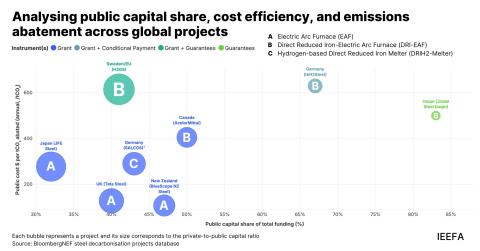Agencies with power to approve pipelines need a reality check
Download Full Report

Key Findings
In two pending pipeline cases, regulators including FERC have relied on predictions, even though actual data contradicts their conclusions. Taking such shortcuts today can have adverse effects tomorrow.
Pipeline infrastructure is costly and the effects of a pipeline typically last for 40 years or more. FERC decisions to approve or deny gas pipelines will lack credibility if they’re not based on rigorous analysis.
When real-world data comes in that contradicts the predictions of pipeline applicants, federal regulators ought to reevaluate their decisions in the light of new facts. But they don’t always do that.
By basing its analysis in balancing a gas pipeline’s harmful effects against its benefits on predictions instead of actual data, FERC calls into question the validity of final permitting decisions.
Executive Summary
Will a new pipeline erode farmland or harm a waterway? How much methane will leak?
Regulators are often called on to make judgments about such questions. In the absence of hard data, they often turn to theoretical models or the applicant’s projections to inform their decisions. When real-world data contradicts the predictions, regulators should reevaluate their decisions in the light of new facts.
But they don’t always do that.
In two pending pipeline cases, federal regulators have continued to rely on predictions, even though real-world facts conflict with their conclusions. This type of conduct distorts an agency’s analysis in balancing the adverse impacts of a project against its purported benefits, and calls into question the validity of the final decision. Pipeline infrastructure is costly and the effects of a pipeline typically last for 40 years or more. The permitting agency must conduct a robust analysis, and it must not dismiss relevant facts out of hand.
Appeals for the D.C. Circuit revoked FERC’s certificate, based on a lawsuit by the Environmental Defense Fund. The appeals court had criticized FERC’s reliance on a single precedent agreement between corporate affiliates as conclusive proof of need, and held that FERC’s “cursory balancing of public benefits and adverse impacts was arbitrary and capricious.”
The agency must now complete a more comprehensive evaluation of the Spire STL pipeline and decide whether to grant it a new certificate to operate. FERC’s draft supplemental EIS, issued in June, concludes that continued pipeline operation would have “less than significant” environmental impacts in most respects. Its conclusion relied on the pre-construction predictions in the original 2017 EIS, based largely on the applicant’s promises. FERC did not examine the changed circumstances—the effects on the land.
Ignoring reality in this case, when reality has already occurred, is unreasonable and unjustified.















